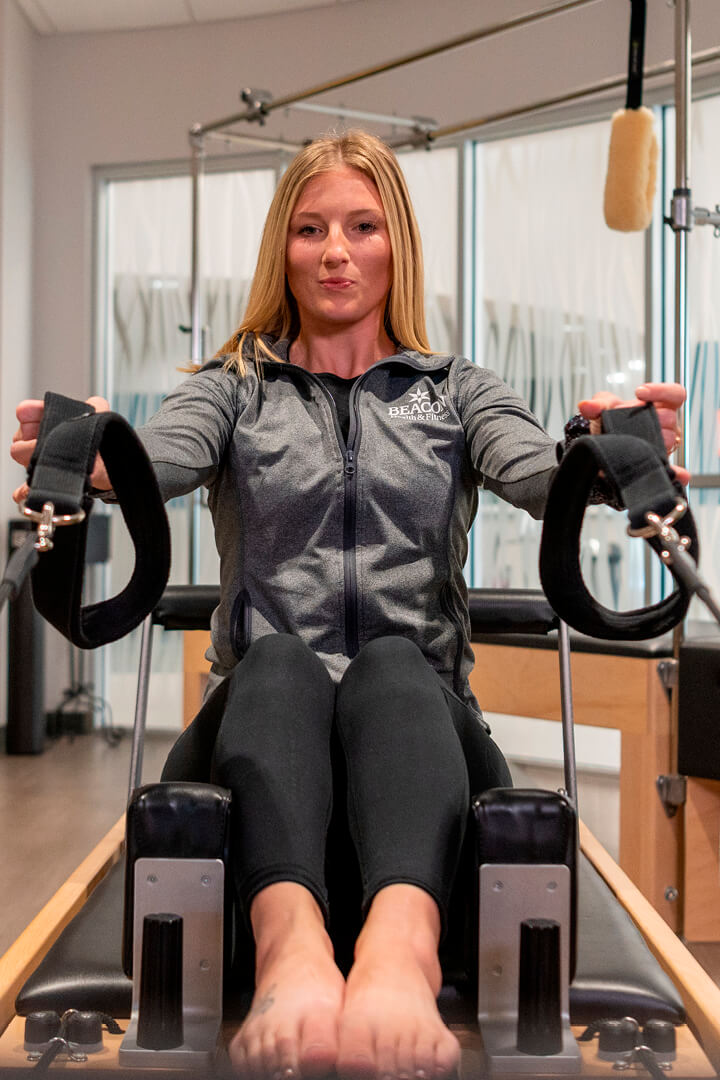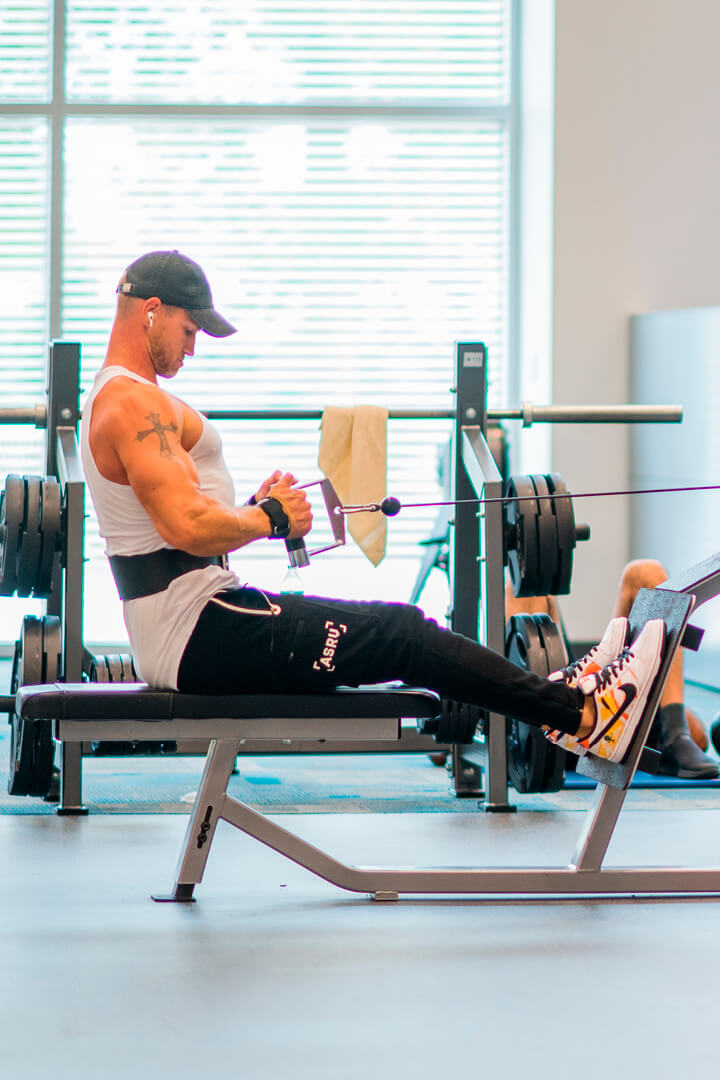[vc_row css_animation=”” row_type=”row” use_row_as_full_screen_section=”no” type=”full_width” angled_section=”no” text_align=”left” background_image_as_pattern=”without_pattern”][vc_column][vc_column_text]We tend to go into a new year excited to make a fitness change, but come spring, it’s hard to stick it out. Maybe you’re not seeing the results you expected, are under a lot of work/family/life-related stress, or are just overwhelmed by the gym itself. No matter what you are feeling, it is important to re-evaluate your goal and ensure that they align with your individual lifestyle.
As a personal trainer, my job involves extensive client-specific goal setting. If a client goes into a workout program with the wrong outlook on fitness, the results can be disastrous and set them back even further than where they started.
If you’re not quite sure where to begin (or continue), try the following goal setting exercise to help you develop the specific, measurable, achievable, realistic, and time-bound goals you need for success both in and out of the gym. While these goals are usually introduced in the S.M.A.R.T. order, I find it helpful to use the order below:
- SPECIFIC: Identify your goals. Be exact with what you would like to accomplish. Start with one at a time and work through the process individually with each one.
- MEASUREABLE: Is your goal measurable? If not, identify what ways you can measure it. For example, if your goal is to lose weight, how many pounds are you looking to lose?
- TIME-ORIENTED: Now that you have set a specific goal and have put a number to it, it’s time to determine your timeframe for achieving this goal. Let’s look at the weight loss example above. To make this time-oriented, I would say, “My goal is to lose X pounds in X amount of time.”
- ACHIEVABLE: Now that you have created a specific, measurable, and time-bound goal, it’s time to determine whether this goal is actually attainable. It is important to think logically during this process, as results (whether it be weight loss, muscle gain, improved speed, etc.) take awhile to achieve. In fact, if your goal is weight loss, it is generally recommended to lose no more than 1-2 pounds per week. So, if your goal is to lose 10 pounds in 10 days, revisit steps 1-3 above to make it more attainable.
- REALISTIC: Once you have determined that your goal is achievable, you can identify whether it is realistic. While your goal may theoretically be attainable, is it something that you personally can achieve? It is during this step in the goal setting process that we identify any personal barriers we may have that could potentially interfere with our goal.
Once you’ve identified your personal barriers to change, it is time to determine how you can overcome these challenges in order to still achieve your goal. Here’s an example of how to overcome some of the more common barriers:
- Work Responsibilities: If you work long, possibly unpredictable hours, it can be difficult to have the energy or time to exercise.
- The Fix: Consider morning workouts, shorter workouts, periodic walking breaks at work (if you have a desk job), and working out with a coworker. As corporate fitness continues to become more popular, try talking with your boss about incorporating healthy living incentives in the workplace. While regular exercise may not be realistic, shifting the focus to improving nutrition may be the may to go.
- Family Responsibilities: Having a family is a full-time job. Juggling household responsibilities and children’s schedules is extremely challenging, as well as energy draining, so exercise is often out of the question.
- The Fix: Incorporate “active” family time into your schedule. This doesn’t necessarily mean taking the kids to gym, but playing a game/sport together, going on a hike, or playing Wii Fit/Just Dance together could be more achievable means of staying fit.
- Medical Conditions/Physical Limitations: Oftentimes, people believe that certain injuries or conditions prevent them from being able to achieve their fitness goals.
- The Fix: Fitness is never one-size-fits-all. No matter your condition, there are fitness programs available to suit your needs. For example, at Beacon, we have an extensive “Best Medicine” program that provides physical activity for people with Parkinson’s, cancer, arthritis, Down syndrome, and autism, to name a few, and our South Bend location is home to a wheelchair basketball league.
Congratulations! You have now identified a solid S.M.A.R.T. goal and are ready to begin your pursuit of change. As always, for assistance with setting your health and wellness-related goals, ask a Beacon fitness trainer. That’s what we’re here for, so don’t be afraid to ask![/vc_column_text][/vc_column][/vc_row]





